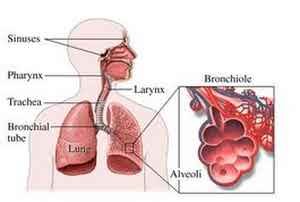ADVERSE EFFECTS OF AEROSOL CANS WHEN THEY ARE NOT PROPERLY USED AND DISPOSED

AEROSOL CANS
INTRODUCTION
Aerosol cans are classified as Dangerous Goods under Class 2, with a listed international reference number of UN1950.
DEFINITION OF AN AEROSOL
An aerosol can be defined as a composition of solid or liquid particles hung in air or other gaseous environment. Aerosols vary in size and composition, they can be naturally or man made produced, and thus there are a wide range of them, from flame synthesized nano particles and nano materials (good aerosols), with basically new properties and use because of their small size (<100 nm) to airborne particulate matter resulted from the industrial production of nano materials, and viruses that have a negative effect in visibility and human health (bad aerosols).
NEGATIVE IMPACTS ON HEALTH
According to estimates from the World Health Organization (WHO), particle pollution contributes to approximately 7 million premature deaths each year, making it one of the the leading cause of worldwide mortality.
The health effects of the particles are directly related to their size. Particles greater than 100 μm are generally too large to be inhaled. Particles between 10-100 μm can be inhaled, but are usually stopped by our body’s “filters”— the mucus membranes in our respiratory system.
The term inhabitable particles typically refers to particles less than 10 μm in size that can make it past the body’s defenses and deep into the lungs. Inhalable coarse particles are particles between 2.5 and 10 μm in diameter (PM10) and are typically found near highways and factories. As the figure to the right shows, these particles are usually deposited in the nose, pharynx, and larynx.
Particulate matter penetration into the human respiratory system.

Human respiratory organ
Based on their size, particles can penetrate into different parts of the human respiratory system. The “deposition fraction” is the fraction of particles of a certain size that is deposited, or gets stuck in a certain part of the respiratory system. Most large particles are deposited in the nose, pharynx, or larynx, and therefore don’t make it deep into our lungs. Smaller particles, however, are more likely to penetrate more deeply into our lungs, into the trachea, bronchioles, or alveoli.
HEALTH RISKS FOUND IN HOUSEHOLD AEROSOL.
Researchers said often use of such chemicals looked to increase the risk of diarrhoea, earache and other signs in infants as well as headaches and depression in mothers.
The results came from a survey of more than 10,000 women on the use of fresheners and other aerosols during pregnancy and early childhood, as well as their health and that of their offspring.
The study is among the first to look at the effects of chemicals known as volatile organic compounds (VOCs), on infants. Researchers in Australia lately proposed high levels of VOCs may add to asthma in toddlers.
Statistics had it that more than 40% of families used air fresheners regularly.
"People may think that using these products makes their homes cleaner and healthier, but being cleaner might not necessarily mean being healthier.
"Air fresheners combined with other aerosol and household products contribute to a tough mixture of chemicals and a build-up of VOCs in the home environment.
Pregnant women and babies up to six months may be particularly susceptible, because they spend around 80% of their time at home. There may also be implications for other groups who are at home a good deal, such as old people.
Women may be more prone to the effects of solvents due to their greater percentage of body fat, and the "complex mixture of unknown chemicals" in the home may have an extra effect on their and their babies' health.
It is said that 32% more babies suffered diarrhoea in homes where air fresheners were used daily than in those where they were used once a week or less. They also suffered more from earache.
Daily use of aerosols in other products were associated with a 30% rise in diarrhoea, and, to a lesser extent, vomiting. Mothers suffered nearly 10% more headaches where air fresheners and aerosols were used daily. There was also a link between fresheners and levels of maternal depression; 16% of mothers reporting depression compared with 12.7% of those who seldom used them, an extra risk of 26%.
The questions on aerosol and air freshener use were included after levels of VOCs were studied in 170 randomly selected homes. nd their babies' health.
Aerosols can be naturally or man made generated. The latter can also be produced inadvertently as a portion of combustion emissions, but they are also produced intentionally for commercial uses.
Manufactured aerosols (nano particles and nano materials) are playing an increasing role in water, soil, and air treatments; efficient energy production and storage;
About three-quarters of all aerosols found in Earth's atmosphere come from natural sources.
NATURAL SOURCES OF AEROSOLS
.jpg)
Sea salt
.jpg)
Soil and rock debris
.jpg)
Products from volcanic eruption
.jpg)
Smoke from burning forest
Health problems associated with smoke inhalation from wildfires are heat damage, asphyxiation, and irritation of the lung tissues.
An example of bad aerosol because of its negative impact in the eco system,visibility, and human respiratory system.
COMMON CAUSES
- Lightning
- Human carelessness
- Arson,
- Volcano eruption
- Pyroclastic cloud from active volcano.
SAFETY USE OF AEROSOLS
Keep away from sources of ignition- No smoking.
Do not burn or puncture even after use.
Aerosol cans should never be placed in fires or heated locations, because they may explode, and the propellant may be flammable. Cans that are still pressurized may also burst if place in a garbage compactor.Use only in well ventilated areas.
Hazardous waste can should be disposed in a special closed container displaying markings indicating that the waste is hazardous. The labeling should also indicate the specific types of waste and the date when the container began to be used.
Keep records of when and how the waste was disposed or recycled.
CONCLUSION
REFERENCE
Bond T.C et al 2013. Bounding the role of black carbon in the climate
Source
Copying/Pasting full or partial texts without adding anything original is frowned upon by the community. Repeated copy/paste posts could be considered spam. Spam is discouraged by the community, and may result in action from the cheetah bot.
More information and tips on sharing content.
If you believe this comment is in error, please contact us in #disputes on Discord
Hi! I am a robot. I just upvoted you! I found similar content that readers might be interested in:
https://www.theguardian.com/society/2004/oct/19/health.uknews
Go here https://steemit.com/@a-a-a to get your post resteemed to over 72,000 followers.